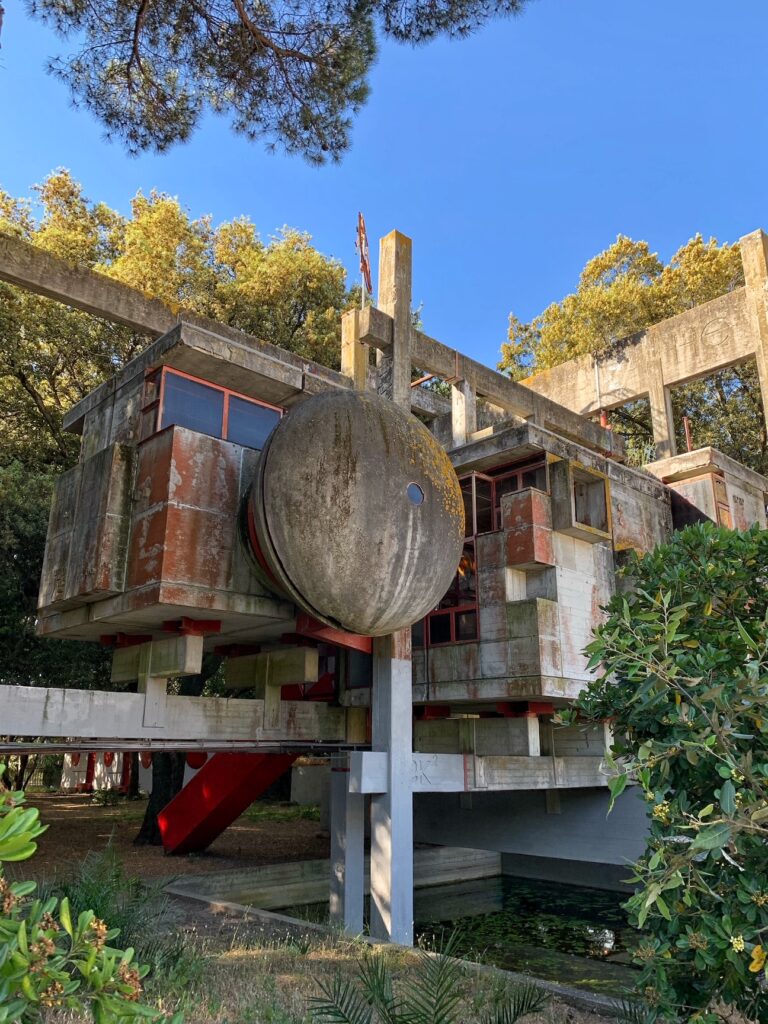
There’s this crazy geometry of a house that sits in a town out by the Fiumicino airport. Now almost completely obscured by pine trees, it’s not something that a person will likely notice if passing in a car. Rather, it’s something that would be spotted immediately by a kid sitting in the back seat with an eye for adventure. I can just imagine the dialogue now:
Kid: “Whoa! Can we go back? We just drove by a space house!”
Zoned-out Adult: “Yes, I’m sure we just did.”
And then they’d drive on to the seaside or back towards Rome without ever stopping.
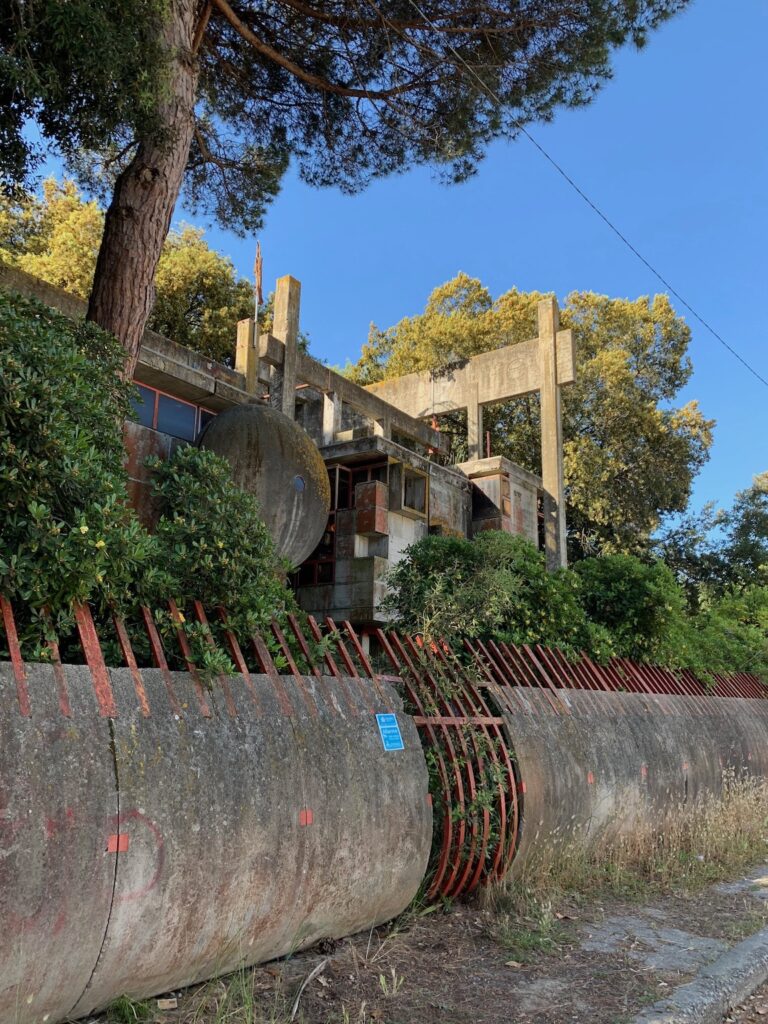
Unlike the centuries-old Mausoleum of Augustus, or even the intricate remnants of the neighboring Ara Pacis…this house is a fish out of Italian water. The focus is on shapes like spheres and cubes, and the concrete nature might suggest something that Brits would expect to see in The Barbican. To my eyes, it looks like something that would have been built next to my old high school back in the 1970s. Or something that Disney would have used in one of their kooky 1970s films.
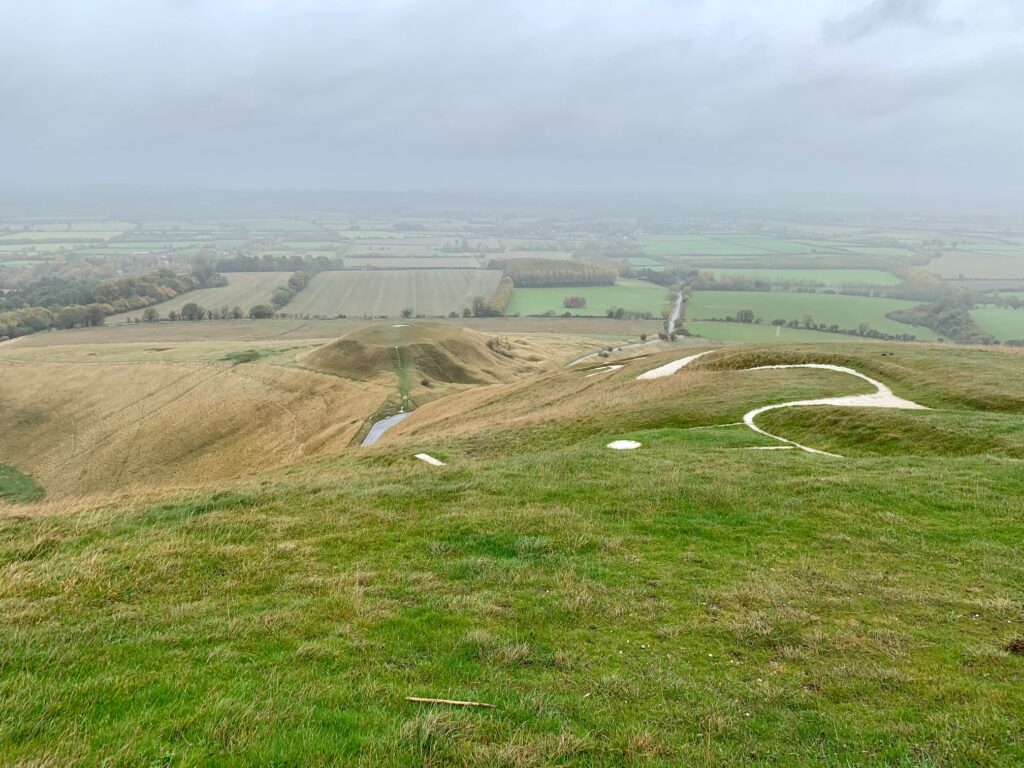
One of the greatest things about life as a human is that we get a chance to make our unique ideas a reality. And that’s a large reason why exploration is so enjoyable. There’s random stuff everywhere that catches your eye and makes you stop. Whether something puts a smile on your face or you simply scratch your head, it still offers the brain what I believe to be a much-needed pause. Something like The Big Blue Bug in Rhode Island, or the Uffington White Horse in England. We rely so much on and appreciate predictability—but I think it’s healthy to periodically stumble across something that break in the norm.
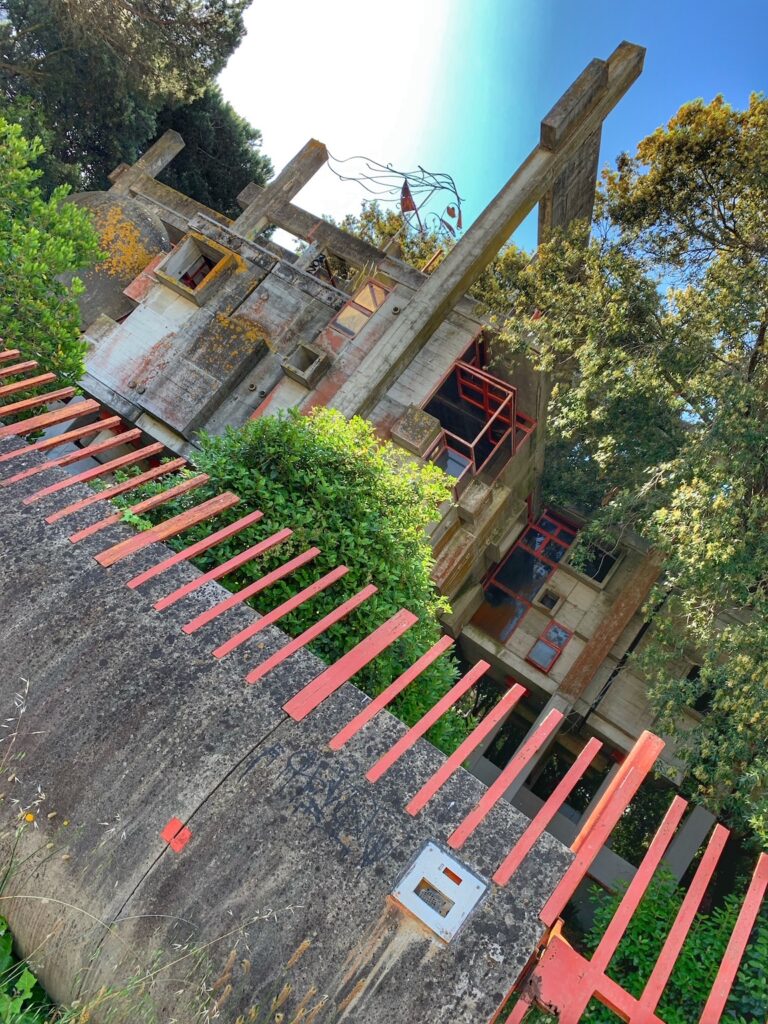
This “space-age from 50 years ago” house that sits outside of Rome is not a point of interest I’d mention to visitors coming to Italy. The competition for big ticket divertimenti is clearly too great. Furthermore, it doesn’t help that the house’s grounds are completely sealed off and signs threaten video surveillance (which I can’t fathom to be true). But all the same, if you happen to be in the neighborhood, it is worth spending a few minutes gazing at through the parabolic red metal and concrete fence. It makes you kind of wish they’d scrub off all the graffiti, fix it up, and open it up to the public.
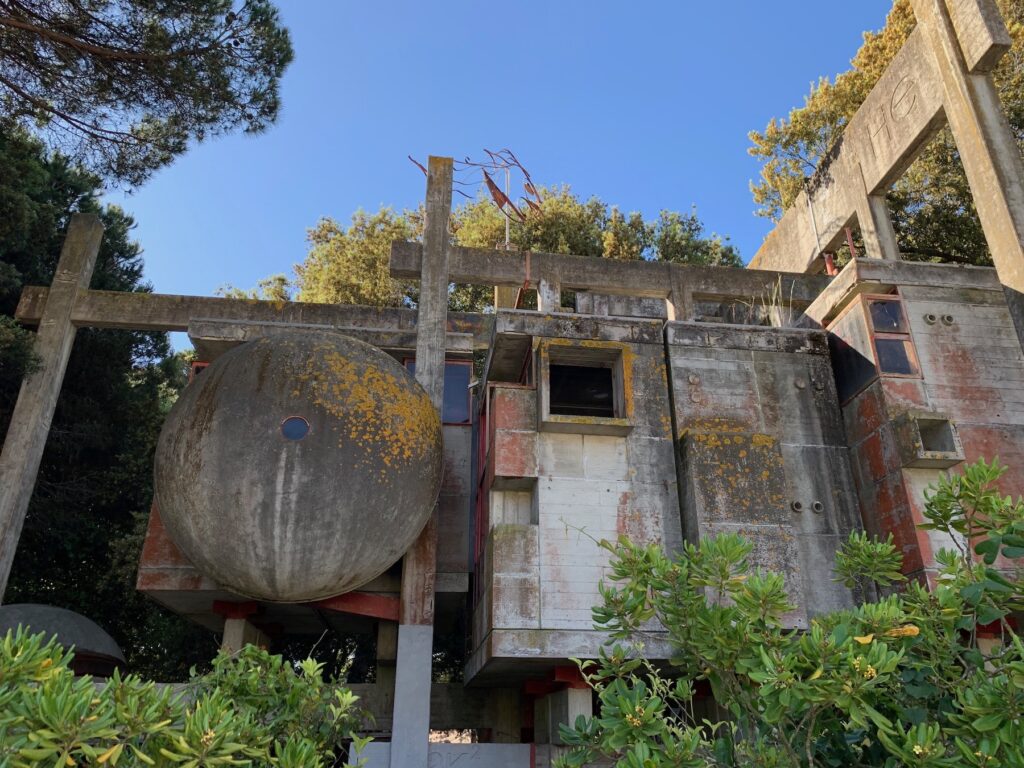
My limited internet searches on the house do yield a bit about the family, architectural concept and the era in which it first went up. One family member was quoted calling it “an unfinishable, endless house”. I have no idea whether they meant that in an exasperated way—or perhaps they are just matter-of-fact about what it ultimately became. While aesthetically the house is a bit of a unicorn, ultimately it appears to be just like the scores of other houses in Italy: largely neglected with an owner somewhere who has neither the time, patience, nor resources to deal with it.
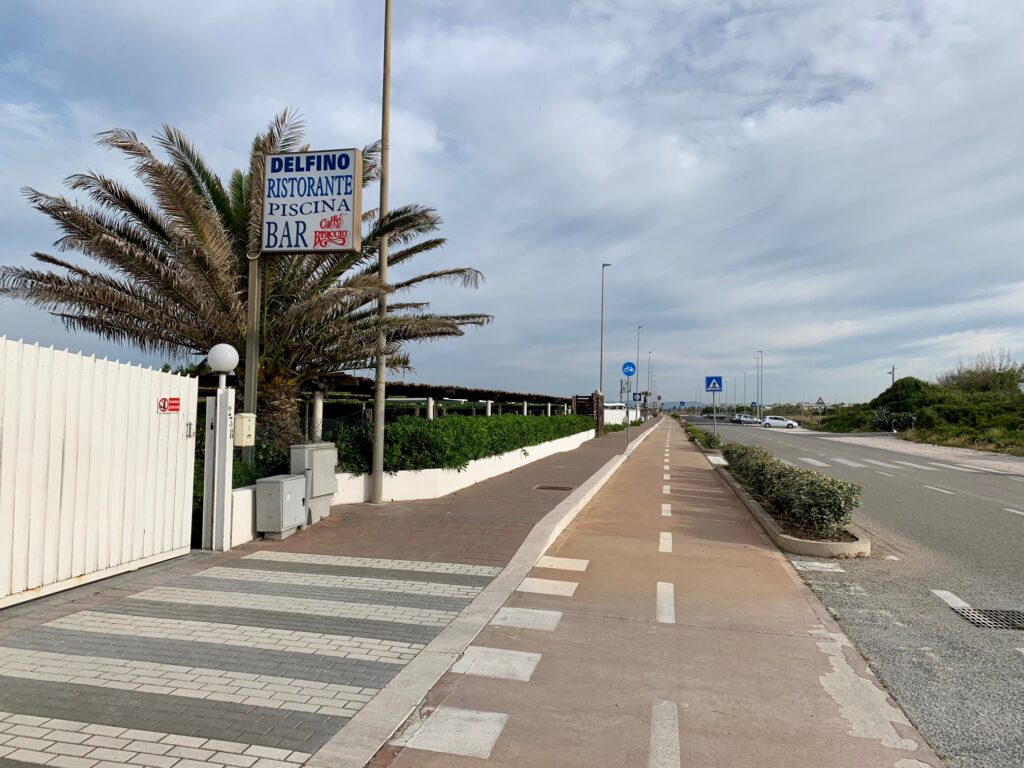
Even if this place does eventually collapse to the ground and become moonscape of concrete, I still feel a strange appreciation for what it is. Heading out to explore this town that was made famous by Italian filmmakers and fashionistas in the 1960s, I felt a bit let down in how it has been developed. The road and pedestrian paths that paralleling the sea have been completely built up and any view to the sea has been obscured by long walls, dining establishments and private resorts. You kind of need to look elsewhere to see what’s around.
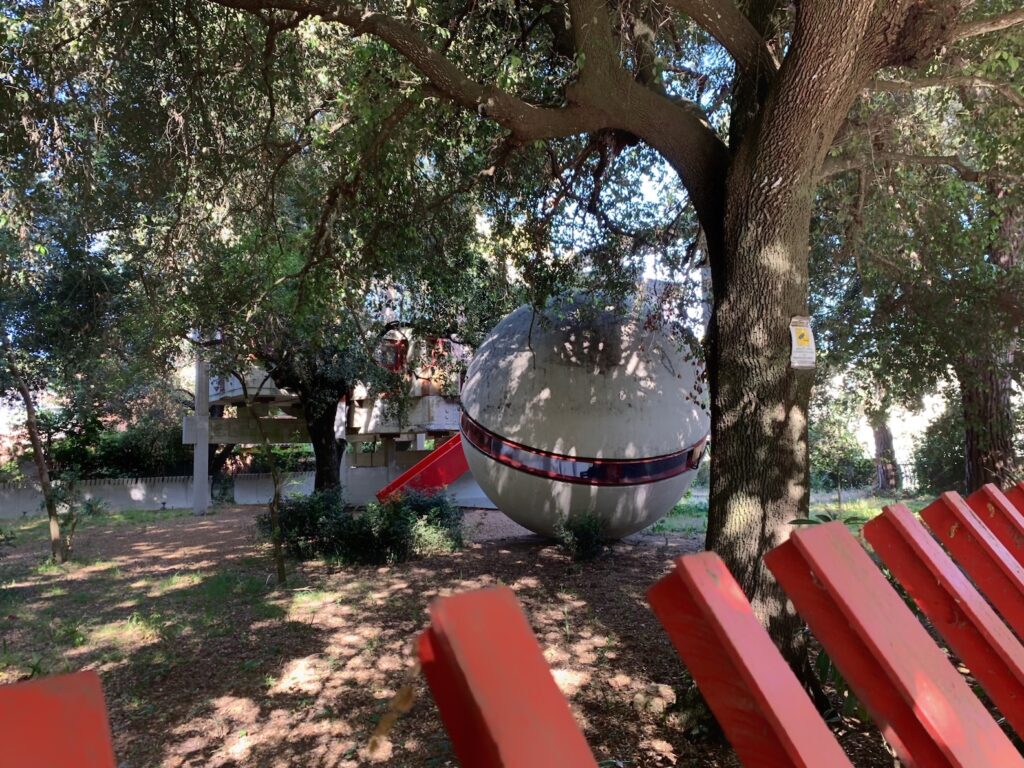
I don’t know if I’ll ever stop to see this experimental house again while I’m in Italy; there are simply too many other places that I’m dying to see. But in an adult world that frequently threatens tedium, I do feel reassured when I see these kinds of things. They remind you of what is possible—even if some might label it as ridiculous or perhaps as a fool’s errand. To me there is still much goodness in creating art. It contrasts with everything else that has been over-developed and perhaps even helps us to return to that time when we were in the back of an old car. Living without the need to focus only on what’s up ahead and instead only staring out at the world in the endlessly possible periphery.